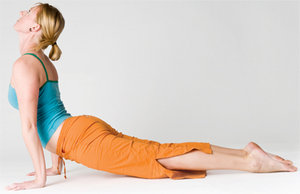If you don’t have good posture, what do you have? Poor posture can lead to a variety of health problems over time, and yet too many people have bad postural habits. It’s time to understand the fundamentals of proper posture and how you can stay healthy from head to toe.
Sit up straight! Stop slouching! Don’t stare at the floor when you walk! These are the classic phrases children hear from their well-intentioned parents regarding posture. As children, we learn early on that posture is important, but generally never fully understand its role in our health, what causes poor posture or how to positively influence it. Let’s start with a simple definition from the Merriam-Webster dictionary, which defines posture as “the position or bearing of the body whether characteristic or assumed for a special purpose.” Want to know more? Read on…
Ideal Posture
Let’s focus for just a moment on the characteristic aspect of posture, the basic form we take while standing or walking. The human body is designed to stand with the eyes level with the horizontal plane of the Earth. Viewed from the front, the shoulders and hips are level and the spine is vertical. From the side view, the ear is over the shoulder, the shoulder is over the hip and the hip is over the knee, which is over the ankle.
 Think of it like the foundation of a house. The foundation can settle, creating structural stress that can crack the plaster on the walls or ceiling. The same is true for our bodies. Unequal support in the foundation of our body, our feet,can create stress in our structure that can show up as poor posture. This poor posture can lead to tight muscles, stiffness and ultimately contribute to joint degeneration in the knees, hips and spine. Basically, small imbalances over time can lead to big problems for our bodies.
Think of it like the foundation of a house. The foundation can settle, creating structural stress that can crack the plaster on the walls or ceiling. The same is true for our bodies. Unequal support in the foundation of our body, our feet,can create stress in our structure that can show up as poor posture. This poor posture can lead to tight muscles, stiffness and ultimately contribute to joint degeneration in the knees, hips and spine. Basically, small imbalances over time can lead to big problems for our bodies.
Common Postural Problems
The most common signs of postural stress are one ear being higher than the other and unlevel shoulders or hips. You can also detect postural stress from the side if the ear looks as if it has moved forward of the tip of the shoulder or if the hips appear to have moved forward.
The first thing to do is find out where your postural stress is coming from. Certain jobs require you to sit, stand, twist or bend in repeating patterns, which can create postural stress. If you sit at a computer for long periods of time, that can have a tendency to create a forward head positioning, causing stress in the neck and upper back. Bending and twisting motions can cause an overdevelopment of muscles on one side of the body compared to the other side, which can also be a source of postural stress.
The foundation of posture is actually the feet. It is very common for there to be slight differences in the arches of the feet, which create a slight imbalance. This imbalance can cause a chain reaction all the way up the spine, affecting postural balance. One sign of foot imbalances is when one foot flares out more than the other. Both feet should point forward with only the slightest outward flare when you walk.
Flat feet, a condition also known as excessive pronation, can produce slight twisting movements in the knees and hips, causing one hip to be higher than the other. This is usually more pronounced on one side and is not typically painful, but it explains why one knee or hip can develop soreness or stiffness more than the other one.
A Few Things You Can Do
Get checked – If your posture is breaking down as a result of improper foot balance, it is important to have your feet examined to determine if a custom-made, flexible shoe orthotic will be beneficial. Orthotics create a solid foundation for your pelvis and spine by limiting excessive motion in the feet. Having a stable foundation helps to improve your posture. Your doctor can provide you with more information.
Improve flexibility – This is important because postural stress causes some muscles to work harder than others, creating tension and stiffness. Mirror image exercises are stretching and strengthening exercises designed to restore muscle balance by stretching in the direction away from the postural imbalance. If you are looking in a mirror and one shoulder is higher than the other, you will want to stretch and strengthen in the direction that makes the shoulders level. The same concept works for the lower back.
Work with your chiropractor – Be sure to work closely with your chiropractor in developing a plan of action, and then check your progress with a postural analysis. It is important to remember that the body works best when it is in balance, so that should be the goal of all of your stretching and strengthening exercises
Good posture does a whole lot more than just allow you to stand and walk tall. It’s a full-body improvement that benefits you from head to toe.
Benefits of Good Posture:
- Joint mobility
- Injury prevention
- Improved balance
- Overall wellness
Consequences of Poor Posture:
- Muscle tension
- Pain
- Fatigue
- Degenerative arthritis
